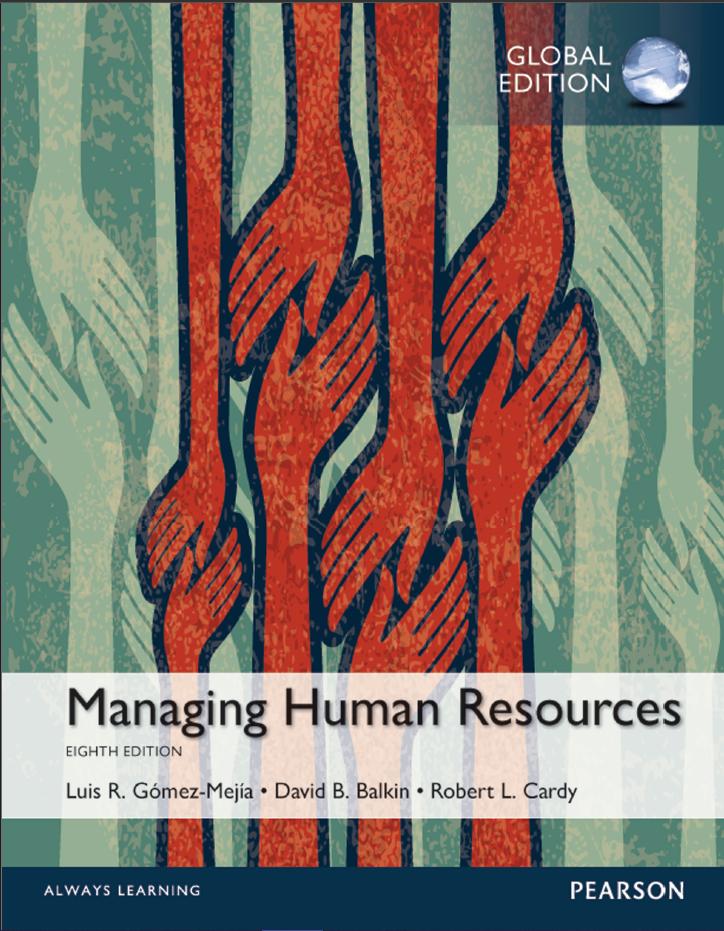What are the pros and cons of Antles compensation policies? Are they attuned to its new business
Question:
What are the pros and cons of Antle’s compensation policies?
Are they attuned to its new business strategies of fostering growth, increasing market share, and enhancing flexibility to respond to competitors?
Antle Corporation (a fictitious name for a company known to one of this book’s authors) is a large electronics and computer firm headquartered on the East Coast. It has more than 100,000 employees.
Founded in 1912, Antle was generally regarded as the world’s number-one designer and manufacturer of large computer equipment from the late 1940s until the early 1990s. At its peak, its share of the market was estimated at 80 percent.
The compensation system at Antle has evolved through the decades, and top managers as well as employees report high levels of satisfaction with it. The following are the essential elements of the compensation system:
• All jobs are evaluated using a point factor approach once every 10 years, with minor adjustments made in between evaluations to correct inequities.
• The company hires a consulting firm once a year to conduct a salary survey for benchmark jobs. The company’s pay policy is to peg salaries at the 75th percentile of the market.
• There are 25 grade levels in the company. Employees increase their pay level mainly by moving up the corporate hierarchy over time. The typical employee remains three years in one job before being promoted to a job at the next grade level. All employees are hired at the entry level and are groomed within the company. Although promotions are ostensibly based exclusively on performance, in practice “time on grade” plays an important role in deciding who is ready to move up.
• Perquisites and special benefits are closely tied to grade level. Stock options, for instance, are available only to employees in grades 17 through 25.
• Pay and promotion decisions are highly centralized.
• The only variable compensation comes from a profit-sharing plan under which the company funds a retirement plan for each employee based on the firm’s profitability over the preceding year.
• Although “pay for performance” is the company’s official policy, most employees view job security and upward mobility over time as the main rewards offered by the firm.
• A strict pay-secrecy policy is in force.
For the past 10 years, Antle’s market share has been declining at an average rate of 2 percent annually. The board of directors decided to offer early retirement to Antle’s chief executive officer, Alan Steven, who had been at the helm for almost 20 years, and replaced him with Peter Merton, who was hired from a smaller but fast-growing competitor. Merton’s mandate is to reverse the company’s declining market share by fostering growth and enhancing flexibility.
Because labor costs are almost 70 percent of Antle’s total costs, one of Merton’s first actions was to appoint a committee to examine the firm’s compensation practices. The committee included the vice president for human resources, the comptroller, and two external human resource consultants. Four months later, the committee produced a report identifying several key problems with Antle’s compensation system and related HRM practices. These problems, according to the report, add to Antle’s production costs and reduce the company’s flexibility and capacity to respond to market changes. The committee’s report presented the following conclusions:
• The firm has too many management layers. This is expensive and slows communication.
• Most employees have developed a sense of entitlement;
that is, they feel they “deserve” regular raises and promotions.
This perception has had a negative effect on motivation.
• The promotion-from-within policy has meant that once hired, very few employees are terminated, even if they are not performing up to standard. As a result, many employees are trapped at Antle because they cannot earn an equivalent salary at any other company.
• Jobs are too narrowly defined, increasing labor costs and preventing people from working to their full potential.
• The company is top heavy with highly paid employees whose best days are over but who are still many years from retirement.
• The firm’s tradition of providing job security is now putting it at a disadvantage because it cannot reduce its labor force to remain competitive.
• The firm has not been taking advantage of outsourcing to foreign locations in order to preserve employee loyalty. But this means that competitors who are going to places such as China and India enjoy a substantial compensation edge, which improves their bottom line.
Step by Step Answer:

Managing Human Resources
ISBN: 9781292097152
8th Global Edition
Authors: Luis R Gomez Mejia, David B Balkin, Robert L Cardy





